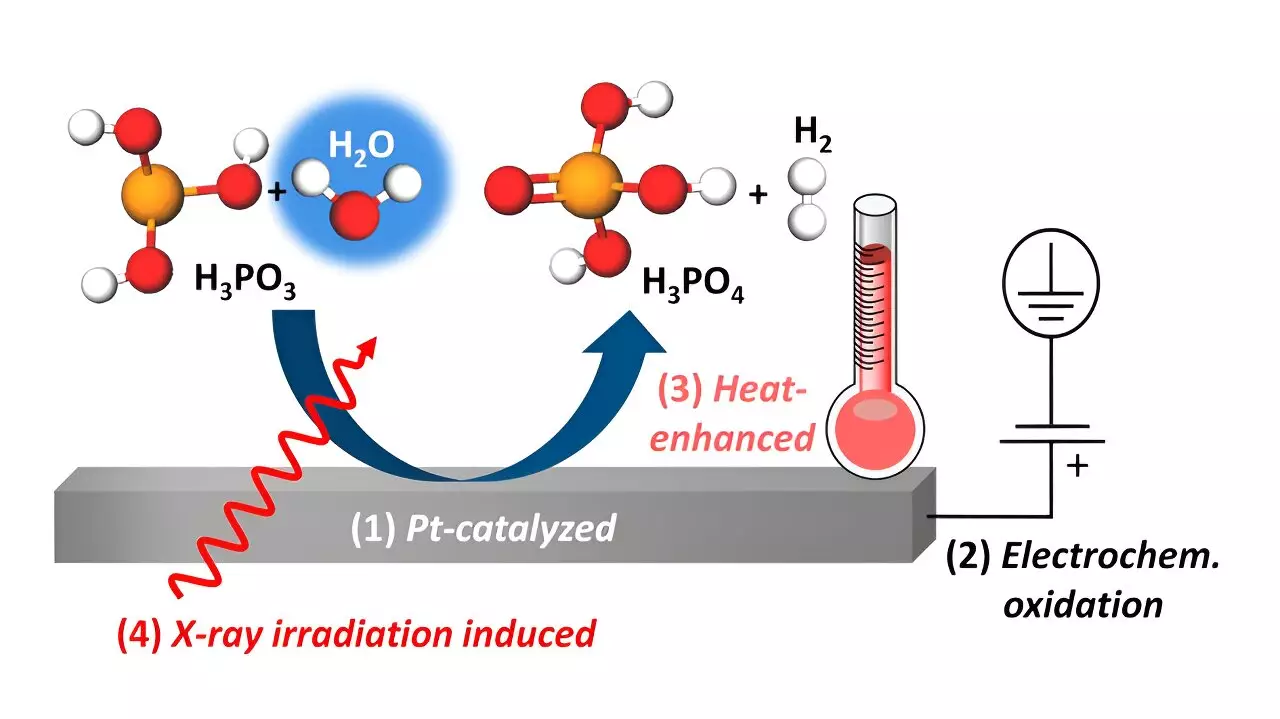The recent experiments conducted at BESSY II with tender X-rays have revealed a deeper understanding of the interactions between phosphorous acid and the platinum catalyst in high-temperature PEM fuel cells. The multiple oxidation processes at the platinum-electrolyte interface have been decoded, indicating that variations in humidity can impact these processes to increase the overall lifetime and efficiency of fuel cells. These findings have been published in the prestigious Journal of the American Chemical Society.
High-temperature polymer electrolyte membrane fuel cells (HT-PEMFCs) are recognized as attractive sources of micro-stationary electricity. However, one of the disadvantages associated with these fuel cells is the leaching of phosphoric acid (H3PO4) from the H3PO4-doped polybenzimidazole membrane, which in turn poisons the platinum catalyst. Recent studies have highlighted additional complications during the operation of HT-PEMFCs, where some H3PO4 may be reduced to H3PO3, further compromising the performance of the platinum catalysts.
Research led by Prof. Dr. Marcus Bär’s team has shed light on the intricate interactions between the platinum catalyst and H3PO3/H3PO4. While H3PO3 has the potential to poison the platinum catalyst, the platinum may also catalyze the oxidation of H3PO3 back to H3PO4. These complex processes have been investigated using an in-house designed heatable electrochemical cell compatible with in situ tender X-ray studies at the OÆSE end-station within the Energy Materials In-situ Laboratory Berlin (EMIL).
The use of intense X-ray light in the tender X-ray energy range at BESSY II has allowed researchers to monitor oxidation processes from H3PO3 to H3PO4. Various oxidation pathways, including platinum-catalyzed chemical oxidation, electrochemical oxidation under positive potential bias at the platinum electrode, and heat-promoted oxidation, have been uncovered. These results have been further confirmed by ion-exchange chromatography and in situ electrochemical characterizations.
The study’s first author, Enggar Wibowo, highlights the significant influence of humidity inside the fuel cell on the oxidation processes. All oxidation pathways identified in the research involve reactions with water, underscoring the importance of controlling humidification to oxidize H3PO3 back to H3PO4. By making corresponding adjustments to the operation conditions of HT-PEMFCs, catalyst poisoning by H3PO3 can be prevented, leading to enhanced efficiency of these fuel cells.
These findings not only clarify a key degradation pathway of fuel cells but also present opportunities for improving the operating conditions of HT-PEM fuel cells. By better understanding the complex interactions between phosphorous acid and platinum catalysts, researchers aim to contribute towards an H2-based energy supply. Prof. Dr.-Ing. Marcus Bär emphasizes the importance of this work as a step towards enhancing the overall efficiency and performance of fuel cells in the future.



Leave a Reply